Posts Tagged ‘dry’
{{start}}
{{end}}
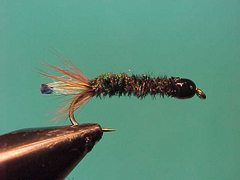
{{+1}}Bead head stick caddis{{-1}}
{{start}}
This is the lava of a Caddis fly (or Sedge) and is common from September through to December particularly in the flooded margins of lakes. The bead head version has been designed to be fished as an anchor fly when loch style fly fishing or as an anchor fly when fishing rivers.{{end}}
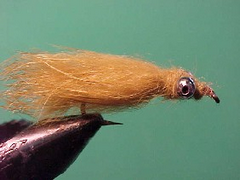
{{+1}}Patriot{{-1}}
{{start}}
I am not sure of the source of this fly but I have had the recipe in my system for a long time and certainly before the onslaught of Google and internet searching. In the interest of full disclosure I decided to get some history on the fly and so searched 'patriot fly'. That search gave me hits on a red and blue bodied dry fly but nothing on an olive green wet fly.{{end}}

{{+1}}Sunset fly{{-1}}
{{start}}
I am confident that my tie is nothing like the original tie, but in my defense many years ago, when I first wanted to tie this fly, a search of all my reference books just didn't uncover a copy of the original tie. My tie of this fly is however quite easy and delivers a useful and robust fly.{{end}}
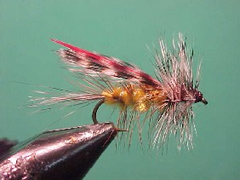
{{+1}}Glenn Innes hopper{{-1}}
{{start}}
Whilst the original tail was brown cock hackles I sometimes use grizzly cock hackles, and whilst the original body was yellow chenille ribbed with fawn chenille I prefer a yellow or fawn chenille body ribbed with a palmered undersized brown hackle and ribbed with fine silver thread. I also sometimes substitute turkey feather slips or bunched up church window feathers for the wings.{{end}}
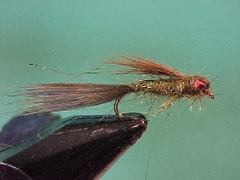
{{+1}}Damsel – Chatto’s MK1{{-1}}
{{start}}
There are over 100 different species of Damselflies in Australia and the lava which are usually slender with three terminal gills, that present as tails, form a significant part of a trout's diet. Their bodies have around 10 segments, they have 6 legs and they often have emerging wings. Most appear to be shades of yellow / olive and brown / yellow with some being quite dark and others quite pale.{{end}}
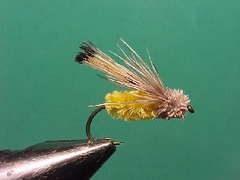
{{+1}}Nobby hopper{{-1}}
{{start}}
Whilst I don't think either the Original or any of the variants represents any of the naturals that I've seen it is a good buggy general purpose hopper pattern. If you experiment with bodies of different colored chenille, yarns and tinsel matched with different colored deer hair you can come up with combinations to suit most small hoppers.{{end}}
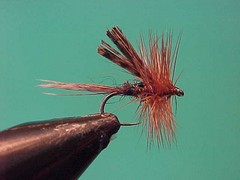
{{+1}}Caenis Dun{{-1}}
{{start}}
If you have a look at Caenis Duns there are fundamentals of shape that are common across the species and captured by this pattern. The tail consists of only three filaments; the body starts thin and is then cigar shaped with 9 distinct segments. They have 6 legs and wings faces back at about a 60 degree angle. The common colours are grey and brown and when they are hatching the vision is of very small single winged sailing boats on the water.{{end}}













